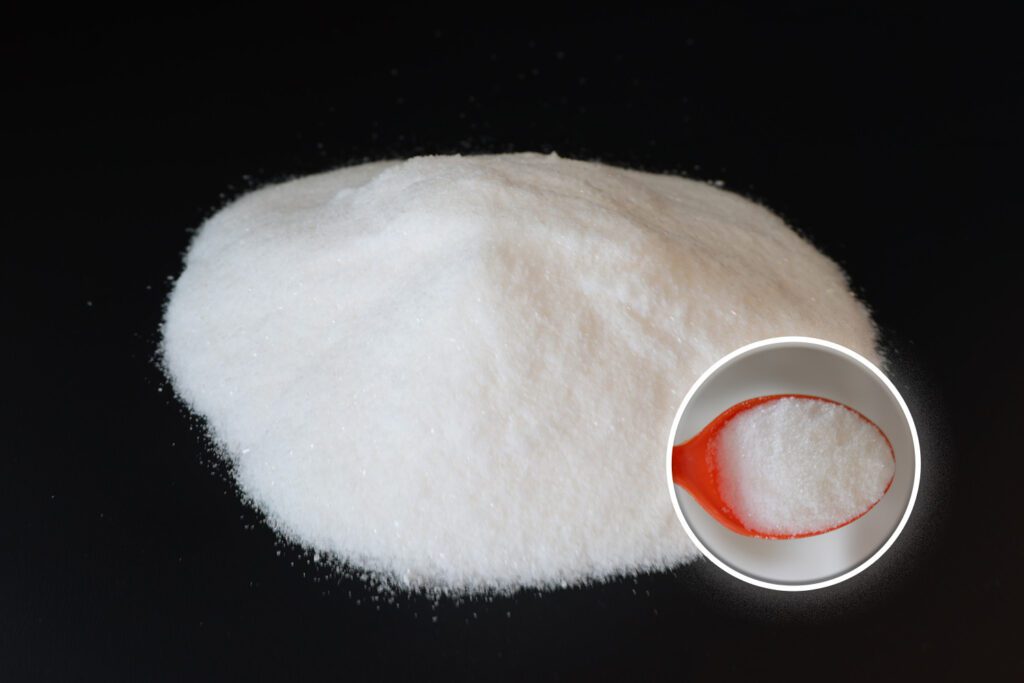Introduction

In the dynamic world of detergent manufacturing, the quest for superior cleaning power and environmental sustainability drives innovation at every turn. Among the array of ingredients enhancing detergent formulations, sodium formate stands out as a versatile and efficacious component. Renowned for its multifunctional properties, sodium formate plays a pivotal role in optimizing cleaning efficiency, stabilizing pH levels, and bolstering sustainability efforts in the detergent industry. Let’s delve into the sodium formate uses in detergent manufacturing and reveal its impact on modern cleaning solutions.
Comprendre le formiate de sodium
Sodium formate is a sodium salt derived from formic acid. It is a white crystalline solid that is highly soluble in water. In the context of detergent manufacturing, sodium formate serves multiple purposes:
- As a water softener, it helps to prevent the formation of soap scum.This can lead to cleaner dishes, softer skin, and longer-lasting appliances.
- It acts as a buffer to maintain a stable pH level in detergent solutions.This helps to ensure that the detergent is effective in cleaning clothes and removing stains without causing any damage to the fabric. Additionally, the buffer also helps to prolong the shelf life of the detergent by preventing any drastic changes in pH that could lead to degradation of the active ingredients. Overall, the buffer plays a crucial role in maintaining the quality and performance of the detergent product.
- Sodium formate enhances the biodegradability of detergents, making them more environmentally friendly.This is achieved by promoting the breakdown of organic compounds in the detergent, allowing for easier decomposition by natural processes. Additionally, sodium formate can help to reduce the overall toxicity of the detergent, further minimizing its impact on the environment.
Applications in Detergent Manufacturing
Sodium formate is leveraged in various types of detergents, including:
- Laundry Detergents: Improves cleaning efficiency, especially in hard water areas.
- Dishwashing Detergents: Enhances the cleaning power and reduces the need for pre-rinsing.
- Industrial Cleaners: Used in formulations for its water-softening and buffering properties.
- Hand Soaps and Body Washes: Contributes to a gentle and effective cleansing experience.
Comparative Table of Detergent Ingredients
Here’s a table comparing sodium formate with other common detergent ingredients based on their properties and uses:
| Ingredient | Propriétés | Uses in Detergents |
|---|---|---|
| Formiate de sodium | Water softening, pH buffering | Laundry, dishwashing, industrial |
| Sodium Sulfate | Bulking agent, electrolyte | Laundry, cleaning agents |
| Sodium Lauryl Sulfate | Foaming agent | Hand soaps, body washes |
| Sodium Carbonate | Water softener, pH adjuster | General cleaning, deodorizing |
| Sodium Percarbonate | Oxygen bleach, stain remover | Laundry, stain removers |
Benefits of Using Sodium Formate
Incorporating sodium formate into detergent formulations comes with several advantages:
- Enhanced Cleaning Power: It softens water, allowing detergents to work more effectively.
- Écologique: Sodium formate is readily biodegradable, reducing environmental impact.
- Improved Formulation Stability: It acts as a buffer, maintaining a consistent pH level in detergent solutions.
- Cost-Effective: It can be used in lower concentrations to achieve desired effects, reducing overall formulation costs.
Challenges and Solutions in Using Sodium Formate
While sodium formate offers numerous benefits, there are challenges associated with its use in detergent manufacturing:
Coût: It can be more expensive than some alternative ingredients.
Formulation Complexity: It may require adjustments to the overall detergent formulation to achieve optimal performance.
To address these challenges:
- Cost-Benefit Analysis: Conduct a thorough analysis to understand the long-term benefits and cost savings of using sodium formate.
- R&D Investment: Invest in research and development to optimize formulations that leverage the benefits of sodium formate.
Conclusion: Sodium Formate Uses in Detergent
Sodium formate is a versatile and valuable ingredient in the detergent manufacturing industry. Its ability to soften water, buffer pH levels, and enhance biodegradability makes it an attractive choice for a wide range of cleaning products. By understanding the benefits and challenges associated with sodium formate, manufacturers can make informed decisions to improve the quality and sustainability of their detergent offerings.
FAQ
Q: Is sodium formate safe for use in detergents?
A: Yes, it is considered safe and is commonly used in various types of detergents due to its beneficial properties.
Q: How does sodium formate improve the effectiveness of detergents in hard water?
A: Sodium formate acts as a water softener, preventing the formation of soap scum and allowing the detergent to work more effectively.
Q: Is sodium formate biodegradable?
A: Yes, sodium formate is readily biodegradable, making it an environmentally friendly choice for detergent ingredients.
Q: Can sodium formate be used in all types of detergents?
A: It is versatile and can be used in a wide range of detergents, including laundry detergents, dishwashing detergents, and industrial cleaners.
Q: What are the potential drawbacks of using sodium formate in detergent formulations?
A: While it offers many benefits, sodium formate can be more expensive than some alternatives and may require formulation adjustments to achieve optimal performance.


